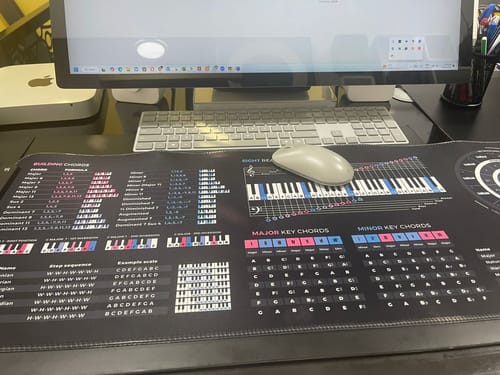
Piano Chords: Building Blocks of Songs and Musical Expression
Learning piano chords is one of the most powerful steps any musician can take — whether you’re a beginner eager to play your first song or a producer looking to add more emotion to your tracks. Chords form the foundation of harmony and are at the heart of virtually every style of music, from pop to jazz to classical.
What exactly is a piano chord? At its core, a chord is simply a group of notes played together. Most commonly, this means three or more notes that harmonize to produce a specific sound or emotional effect. On the piano, this usually involves pressing down keys simultaneously using one or both hands — and once you understand how chords are built, the entire keyboard starts to make a lot more sense.
The most common chord types are major and minor. A C major chord, for example, is made up of the notes C, E, and G — the root, major third, and perfect fifth. This chord sounds bright and happy. Switch that E to an E♭, and you’ve got a C minor chord — darker and more emotional. This simple shift reveals how even one note can completely change the feel of your music.
From there, you can explore other chord types like:
- Seventh chords, which add depth and tension (e.g., C7 = C, E, G, B♭)
- Suspended chords, which replace the third with a second or fourth for an open sound (e.g., Csus2, Csus4)
- Augmented and diminished chords, which add flavor and movement between harmonies
One of the biggest advantages of learning piano chords is the visual layout of the keyboard. Unlike guitar, where chord shapes can vary wildly, piano chords are logical and symmetrical. Once you learn a shape or formula, you can easily move it up or down the keyboard to transpose it into different keys.
But here's the thing — memorizing chords is only part of the picture. To really master them, you need to understand why they work. This is where a tool like the Music Theory Cheat Sheet Mousepad becomes incredibly useful. It offers quick-reference visuals that help connect theory concepts to real-world piano application. Instead of flipping through thick theory books, you can glance at your desk and find the answer you need instantly.
Having this kind of visual support helps reinforce essential theory topics, such as:
- The Circle of Fifths, which shows you which chords naturally go together
- Chord formulas, which help you build any chord from any root note
- Scales and intervals, which are the building blocks of all chords
For beginners, learning a handful of chords can unlock hundreds of songs. With just C, G, Am, and F, you can play everything from pop hits to worship anthems. As you grow more comfortable, you'll expand your vocabulary to include more complex progressions and even begin writing your own songs.
Intermediate players can begin to explore chord inversions, which change the order of the notes in a chord to create smoother transitions between changes. For example, playing a C major in root position (C-E-G) versus its first inversion (E-G-C) allows you to connect to an F chord more smoothly. These small changes make a huge difference in how polished your playing sounds.
As you progress, you’ll also discover voicings — different ways of playing the same chord to suit different musical styles. In jazz, for example, you might play just the third and seventh of a chord in your left hand while comping with extensions in the right. In pop or ballads, wide voicings with open intervals create rich textures.
Don’t underestimate the emotional power of piano chords. They're the heart of every great ballad, film score, or church hymn. They give your music character, dynamics, and emotional pull. With practice and knowledge, you’ll begin to choose chords not just because they fit — but because they say something.
For songwriters, knowing chords means freedom. Want to build tension? Use a diminished chord. Want to lift the mood? Modulate to the relative major. Want to surprise your listeners? Borrow a chord from a parallel key. This kind of harmonic fluency turns your piano into a storytelling tool.
In conclusion, mastering piano chords is more than just memorizing shapes. It’s about understanding the relationships between notes, the theory that connects them, and the creative choices that bring your playing to life. And with the right tools — like a hands-on, visual reference you can use daily — the journey becomes easier, faster, and way more fun.
